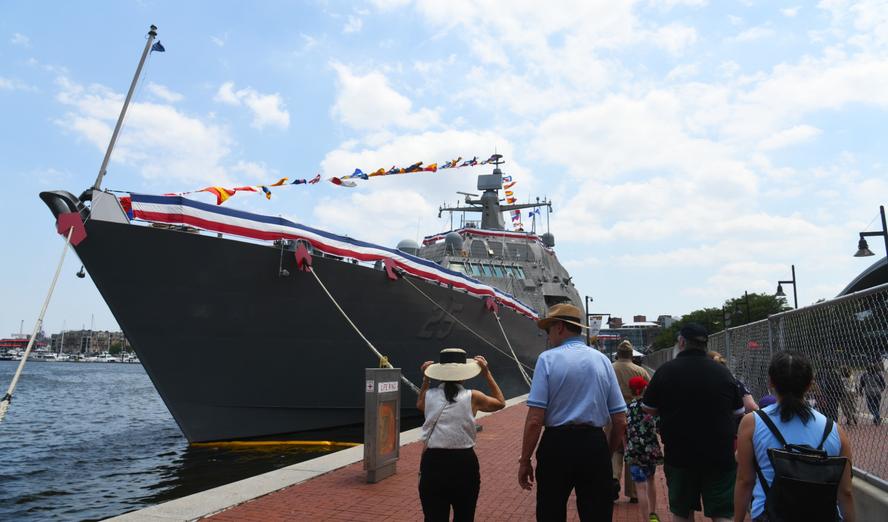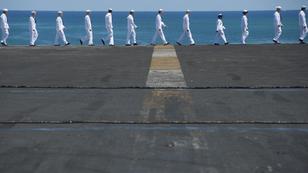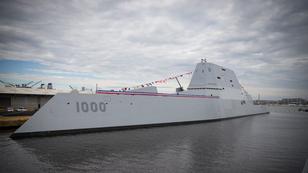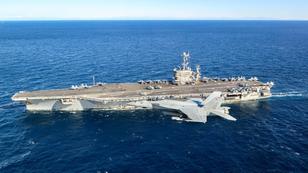To respond to the Trump administration's call for the reinvigoration of the U.S. shipbuilding industry, policymakers should examine past failures, seek an improved shipbuilding workforce, and consider enlisting the help of close allies like Japan and South Korea.
“The U.S. shipbuilding industry is challenged to produce the quantity of ships at the rate required to effect lasting, sustainable growth in the battle force inventory,” Acting Assistant Secretary of the Navy Brett A. Seidle told Congress last month. “On balance, cost and schedule performance remain poor; deliveries are approximately one to four years late, and costs continue to rise faster than overall inflation.”
The Navy's building programs include the Ford-class aircraft carrier, the Columbia-class ballistic missile submarine, the Virginia-class attack submarine, the America-class amphibious assault ship, the San Antonio-class landing platform dock, the Arleigh Burke–class destroyer, the Zumwalt-class destroyer, two variants of the Littoral Combat ship, and the Constellation-class frigate. Some of these classes have been relatively successful in terms of on-time and on-budget delivery. Arleigh Burke, San Antonio, and America classes experienced early delays, but have for the last 10 years regularly been delivered on time and within cost.
The advanced technology to support Marine Operational Movement from the Sea took longer than expected to develop, and as delays occurred, the mission began to become less of a priority.
The other classes, however, have been troubled. Beginning with nuclear-powered vessels—unique because of the security and quality control requirements—the Ford, the Columbia, and the Virginia either experienced delays or were delivered with significant maintenance challenges that followed the ships into commission. With conventionally powered vessels, the Zumwalt class experienced delays and cost growth and was ultimately cut to three ships. The Littoral Combat ship—which has two variants built in different shipyards—experienced lengthy delays (PDF). The Constellation class is already three years behind schedule and threatens to be further delayed.
The reasons for the delays and overruns fall into two broad categories. First, there are issues with design as it relates to requirements; these usually manifest in the first ship of the class but sometimes affect the entire class. Second, there are issues with labor and other industrial capacity; these derive from shortfalls in the nation's industrial base.
Turning first to design and requirements, at the direction of the Secretary of Defense, the Ford class program incorporated multiple advanced technologies into the ship to reduce manning and to generate far more aircraft sorties than its predecessor, the Nimitz class. The combination of these new technologies is still not fully developed and, in fact, is still delaying delivery of the ships. The Zumwalt class destroyer presents a similar picture. The advanced technology to support Marine Operational Movement from the Sea took longer than expected to develop, and as delays occurred, the mission began to become less of a priority. The Navy cut the number of ships in the class until it finally settled on three, which significantly drove up the per-unit price of the ship.
In other cases, the issue is less one of risky new technology than an inappropriate selection of design. The Littoral Combat Ship class variants were originally intended to host three different warfare system modules—mine warfare, anti-surface warfare, or anti-submarine warfare—and thus be able to replace multiple legacy ship classes. The modules did not generally involve new technology, but the means to put replaceable modules on different ships ultimately was abandoned. The Constellation class was intended to be the adoption of a proven European-designed frigate, but the modifications required to bring the hull to Navy specifications became so extensive that in effect, the ship might better have been designed as a completely new hull.
Common in all these cases is a failure to appreciate the risks involved with introducing even relatively well-developed technology.
Regardless of a ship's design, each must be constructed in a highly industrial process in a capital-intensive and expensively manned shipyard. During World War II, U.S. industrial facilities could produce thousands of both sophisticated and rudimentary ships nearly continuously. Over decades, however, ship construction has migrated out of the United States. Today the Navy is effectively the only consumer of domestically produced ships. There is no broader U.S. industrial base for ship building.
Ship construction requires specialized skills, which have become less plentiful as the U.S. economy has moved away from manufacturing. The industry is beset by shortages of skilled crafts workers. Many of the skills are bespoke to a particular warship class, to surface combatants, or to submarines. These labor shortages are particularly acute in submarine construction and are the major reason for delays in the repair of Virginia-class submarines and of initial delivery of the Columbia class. Automation will likely help in aspects of ship construction, but some of the tasks are so specialized that it may be years before machines can replace a skilled human.
Ship construction requires specialized skills, which have become less plentiful as the U.S. economy has moved away from manufacturing.
Successful ship classes have several things in common: they work from a stable design addressing well-defined requirements; are built in shipyards with a qualified and stable labor force; and adhere to industry best practices (PDF).
What should policymakers do? Priorities they should focus on include: establishing that ship requirements cannot be changed unless there is some truly emergent warfighting need to do so; raising wages and implementing training opportunities for labor, with due recognition that automation will advance, and in some cases reduce, labor requirements; potentially creating distributed construction opportunities, which will likely involve close allies—such as Japan and South Korea—that have kept a significant shipbuilding industrial base.
Shipbuilding challenges did not develop overnight, and they will not be fixed immediately. However, the patterns of failure are clear, and analysis of these should guide policy development and implementation. Failure to do so will likely push the United States back toward practices that have repeatedly failed.



